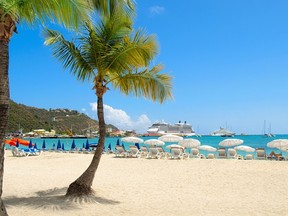There are plenty of things you should know before boarding a vacation ship

Reviews and recommendations are unbiased and products are independently selected. Postmedia may earn an affiliate commission from purchases made through links on this page.
By all measures, cruise travel is booming.
According to Vanessa Lee, a cruise expert and publisher of Cruise & Travel Lifestyles, “The cruise industry overall is undergoing robust growth in every category — ocean, expedition and river, small and large ships, and there is a buoyant feeling from the cruise lines. Not only are many guests booking for 2024 and 2025, but there are early signs of excellent bookings for 2026, especially on longer voyages and expedition cruising. … Many brands are also ordering a number of new ships to be delivered up to the end of this decade.”
Once considered the domain of seniors, the face of cruising is also changing as more families take to the seas.
“After the COVID years, we saw an increase in multi-generational cruising and ‘revenge travel’ as people decided they needed and wanted to join family and friends, and reconnect with the world,” says Lee, whose consumer magazine is the only one in Canada heavily focused on cruising.
“The popularity of small-ship expedition cruising and bucket-list travel has also been amplified in recent years, with many guests wanting to visit both poles and other exotic places far and wide, with like-minded people. And, of course, river cruising continues to shine, with many new ships taking to the rivers yearly.”
With some 2,000 ports around the world, selecting the right cruise can be confusing. To help you drill down, here are a few points to consider:
WHERE IN THE WORLD?
Start by asking yourself: “What kind of a traveller am I?”
Consider who will be cruising (couple, single, family, friends?) and their ages, interests, fitness levels, allergies, etc. Research weather patterns of potential destinations. Many European countries are stifling in the summer, but pleasant and less crowded in spring and fall. Other places have wet seasons or are subject to flooding or hurricanes at various times of year. For beach lovers, Caribbean, Hawaiian or Tahitian cruises are a no brainer. For people interested in history, culture and architecture, Europe might be the answer. And if you love nature and wildlife, Alaska doesn’t disappoint. Other considerations: number of ports visited, number of days at sea, cost of airfare to reach the embarkation point.

SIZE MATTERS
If you love big, busy spaces and action-packed activities, a mega ship (3,500 to 5,000-plus passengers) might be for you. Add a few thousand staff and the shipboard population is akin to a small town. On the plus side for high-energy travellers and families, mega and large ships (2,500 to 3,499 passengers) are chock-full of activities — everything from roller-coasters, water parks and ziplines to children’s programs, nighttime entertainment and myriad dining options. Looking for something less intense? Ships classified as mid-size (1,500-2,499) and small mid-size (800 to 1,499) generally have enough activities to entertain most guests, while small ships (799 passengers or less) have fewer attractions but are well-suited to adults who are more into destination exploration than zip lining. Small, luxury expedition ships sail to bucket list destinations, and have expedition teams specializing in local flora, fauna and geography. River cruising is designed for adults who want a relaxed experience. Often carrying less than 220 guests, these ships take you into the heart of a destination.

GOING ASHORE
Allocate a budget for shore excursions. If you plan to take trips offered by the ship, book early as popular ones fill up quickly. Consider travel time. For instance, on a stop in Le Havre, France, cruise lines may offer a trip to Paris, but with 21/2 hours travel each way, as much time is spent in transit as in the City of Light. Excursions with extensive travel cost more, too. That said, a pricey excursion I took in Alaska is one of my most memorable — a breathtaking float plane flight over glaciers to a remote lodge, complete with salmon bake and unplanned bear sighting. Private tours with local operators are sometimes cheaper. During a port call in Sicily, friends hired a car and driver for half the cost of the ship’s tour. A key component of independent touring is returning to the ship on time. Many readers may have heard about the passengers on private tours in Africa who were late returning and left behind. Wherever you go ashore, take the emergency contact information for the ship.
ARRIVE EARLY, STAY LATE
In this age of flight delays, it’s wise to arrive at the port of embarkation a day early. Also, on a cruise from, say, Venice to Athens, you usually won’t see much of those wonderful cities if you fly in on embarkation day and fly home immediately after disembarking. Most cruise lines offer pre- and post-trips, but you can easily arrange your own.
PACK SMART
I once sailed from Buenos Aires, around Cape Horn and up the Chilean coast. Packing for the 14-night journey was a lesson in layering as it was 28 C in Buenos Aires, a chilly 3 C in the Falklands, and balmy again in Chile. Unfortunately for two colleagues, their luggage never arrived. The cruise line generously provided them with a credit for the shop, complimentary laundry and access to clothing left behind by others. It was a reminder to pack a change of clothes and items that might be difficult to find, such as a bathing suit, in a carry-on bag. On the question of formal nights, most cruise lines have either done away with them or relaxed the dress codes. Some still have gala evenings with an “elevated dress code,” but not necessarily evening gowns or tuxedos.